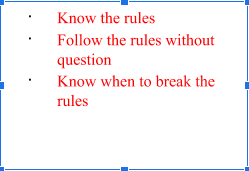Investing is an art and it is also a science. It is an art because we use human sentiments and judgments in interpreting findings and market information.
It is also a science because we employ statistical analysis and computer software in analyzing data to make investment decisions. In my studies and research as an investment analyst and professional investor, I have come to realise that all investors face two major risks and these risks influence our investment decisions to an enormous degree, regardless of whether we are consciously aware of them or otherwise. In this article I hope to draw the attention of my readers to the two major barriers of successful investing.
The first major barrier to successful investing is THE RISK OF LOSING MONEY. As humans as we are, although every one of us seeks to make significant gains from our investments, none seem to be comfortable with the idea of losing money from their investment portfolios. Ask any investor to put their money into any investment module and they will be quick to aggressively quiz you on the possible risk of loss associated with the investment module.
The second major barrier to successful investing is the RISK OF MISSING OUT, which simply has to do with the fear of not being able to take advantage of potential rewards associated with an investment. Fortunately or unfortunately, the nature of investing is such that, there always has to be a
For instance, consider a situation where a real estate property owner presents a real estate property which is a number of kilometres away from an inner city and in an area that is apparently underdeveloped as at the time of the offer. Consider that the property owner woefully reduces the price of this property mainly because of its distance to the inner city and given that the area is also underdeveloped.
The two major barriers to successful investing are:
- Risk of losing money and
- Risk of missing out
Let’s assume the investor turns down the offer after a careful consideration of the conditions and circumstances surrounding the property, risks embedded and given that his fear of losing money overrides his fear of missing out, but another investor with a higher tolerance to the risk of losing money steps in and takes the offer. Fifteen years later, the main city becomes saturated, causing growth and development to spread to the outskirts of the city, reaching all the abandoned and underdeveloped areas, demand for real estate in the less developed areas soars, causing their value to rise a hundredfold and over – the first prospective investor who had refused to invest in the area gets to notice this and becomes burdened with pain and regrets!
The point here is
to expose themselves to every form of investment they come across, which implies higher exposure to the risk of losing money because not all investments will yield positive net returns. On the other hand, an investor who decides to completely eliminate the risk of losing money will probably have to keep all their investment capital in mutual funds and treasury bills, where rock-bottom returns are guaranteed period after period, and completely do away with seemingly risky investments such as highly volatile stocks, indices and CFDs, where potential returns far out-perform market averages.

To effectively, handle these two major risks while giving ourselves the opportunity to take advantage of both risky investments (which offers high potential returns) and less risky investments (which offers little or negligible returns) requires that we put our investment objectives into proper perspective and know how to effectively combine aggressiveness and defensiveness to both risky investment ventures and less risky ones at the right time. In order words, we must know the rules and parameters of successful investing, follow them without question and know when to break them. Knowing how to do this effectively rests on two major foundations – time and experience.
Knowing the rules is quite easy, given the amount of information we can access in our world today within a fraction of a second. We can get to know the rules from text books, investment memoirs, or from the internet.
Secondly, following the rules can be more difficult, in that, our human emotions of fear and panic, hope and greed often
The third stage of investing – knowing when to break the rules is extremely difficult and a dangerous ball game, but the compensation is phenomenal when you are able to do it right. This stage is called the intuitive stage of investing, where an investor has gathered so much exposure and experience under their belt such that, they literally can tell the direction of the economy and the markets from time to time – knowing which assets and investment avenues to venture.
Those who rise to this level can afford to be wrong several times and still be ahead of the “game” over the long haul.
Getting to the intuitive stage of investing involves painful trial and error, even after knowing the rules, an investor must put them into practice and into their own personal perspectives to know what works and what doesn’t. Going through this process is an expensive learning process and can be emotionally painful, in that, ones’ capital is always on the line.
I trust that this piece has provided valuable information to all my readers, which will go a long way to guide you all in your investment endeavors. The key, is to keep in mind that, when in doubt, you always have two options – you either stay out or seek expert advice.
By E .O. ESSIEN

E.O. Essien is a Chartered Economist with accreditation from the Global Academy of Finance and Management (GAFM) and the Association of Certified Chartered Economist (ACCE). He is a professional currency speculator, economic columnist and Investment Analyst. You may reach him via email on elijahotoo.eo@gmail.com or on 0203656160, he will be glad to hear from you.



